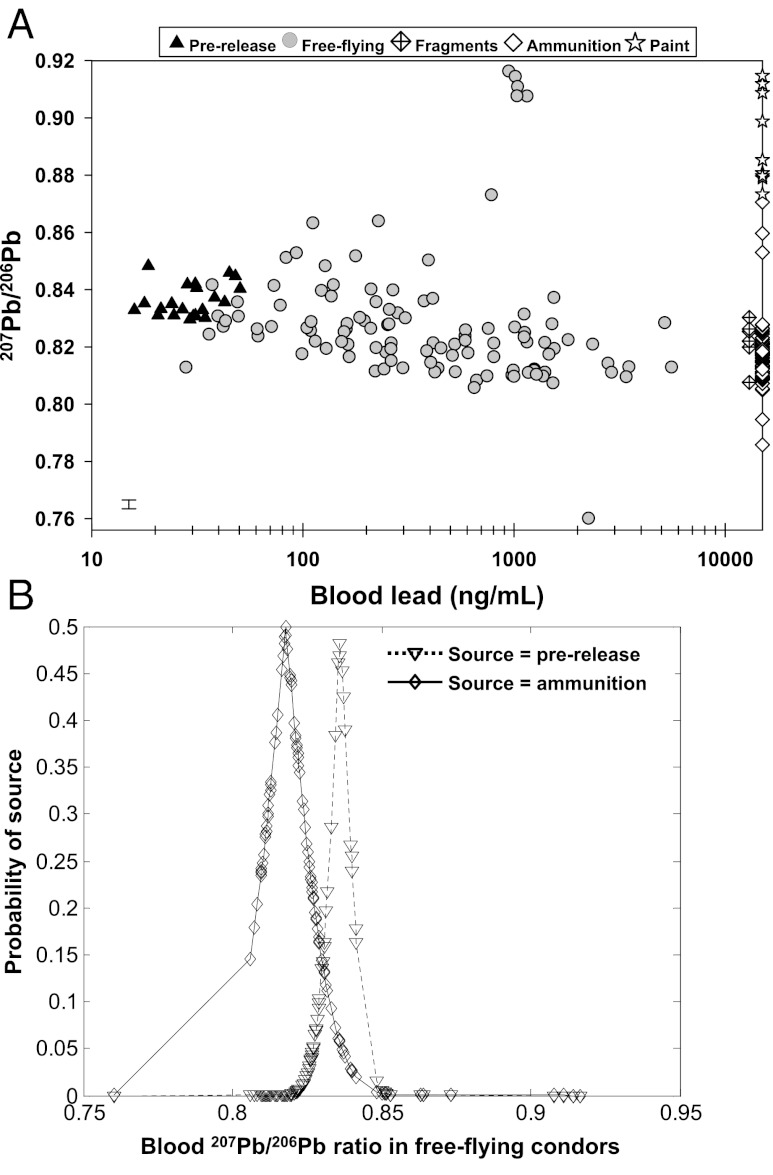Fig. 3.
Ammunition is the principle source of lead exposure in condors in California. (A) Blood lead concentrations and 207Pb/206Pb ratios of free-flying (n = 110) and prerelease (n = 22) condors collected over 2002–2011 (Table S2A). The majority of free-flying condors have blood 207Pb/206Pb ratios consistent with lead-based ammunition (n = 70) and lead-containing fragments (recovered from lead-poisoned birds; n = 6) (Table S2B), with the exception of five to six birds that have a blood 207Pb/206Pb ratio that matches a subset (n = 3) of lead-based paint samples (n = 9) (Table S2C) collected from a fire lookout tower located in the birds’ habitat; x axis is log scale. Error bar (lower left) represents long-term analytical precision for the 207Pb/206Pb ratio measurements (0.2%, 2 relative SD). (B) Probability (one-tailed test) that the 207Pb/206Pb ratio in a free-flying condor in California is consistent with the 207Pb/206Pb ratios of lead-based ammunition or prerelease condors (thus reflecting background environmental lead). Birds that have a probability > 0.05 for a given lead source have a 207Pb/206Pb signature that is not significantly different from that source (assuming normally distributed values) (SI Materials and Methods).

